Nvidia GeForce GTX 1080 Pascal Review
The Division And The Witcher 3 Results
The Division
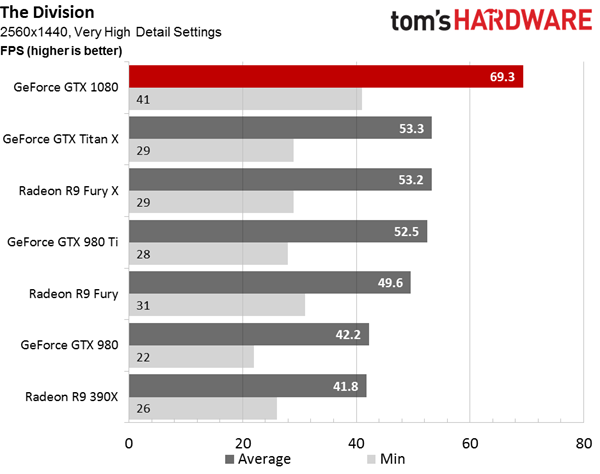
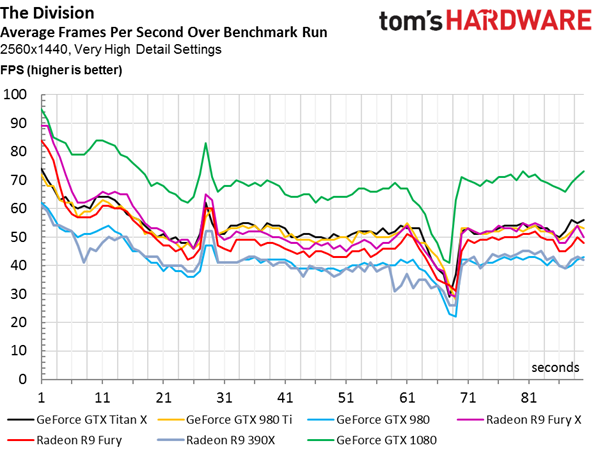
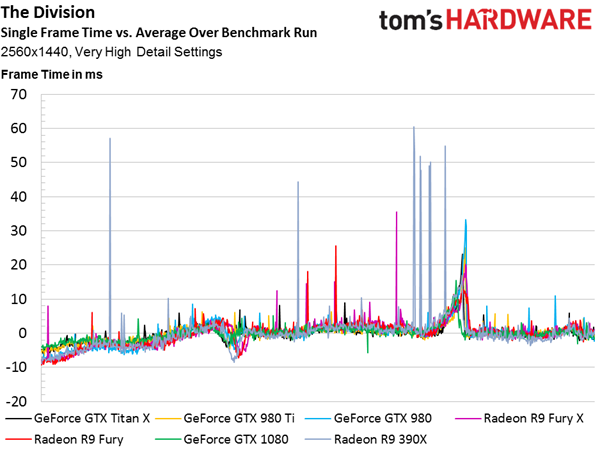
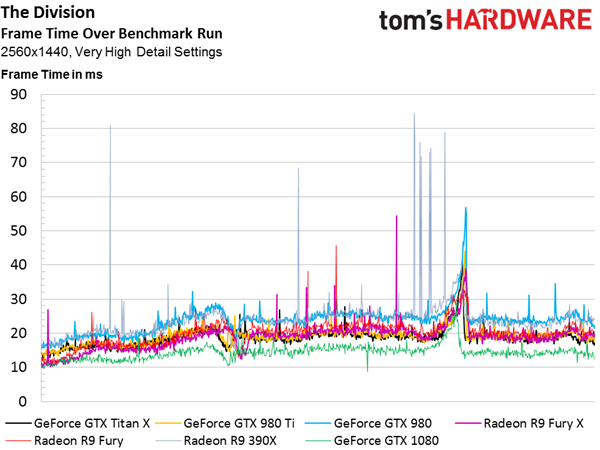
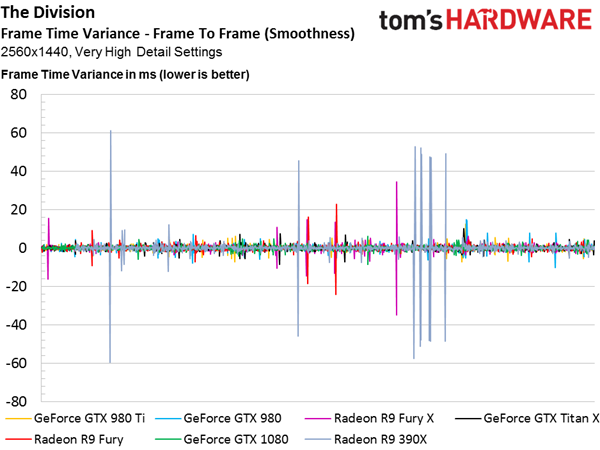
AMD and Nvidia are evenly matched in The Division. The GeForce GTX Titan X matches AMD’s Radeon R9 Fury X exactly, both edging out the GeForce GTX 980 Ti, which in turn shows up just ahead of the Radeon R9 Fury. Consider all of those cards playable.
Then the GeForce GTX 1080 sweeps in, offering a 32% speed-up over the GTX 980 Ti. Better still, a look at our frame time charts reveals exceptional smoothness.
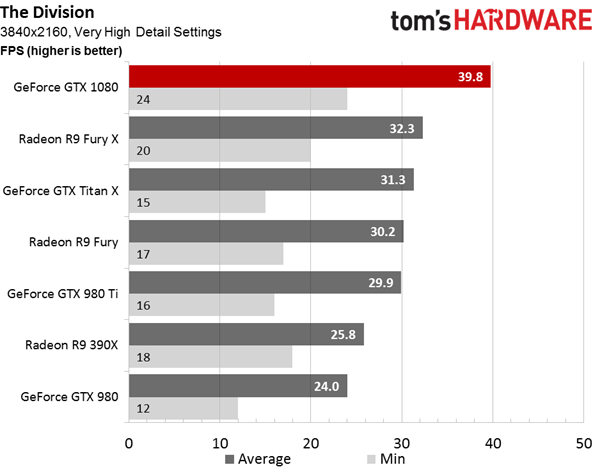
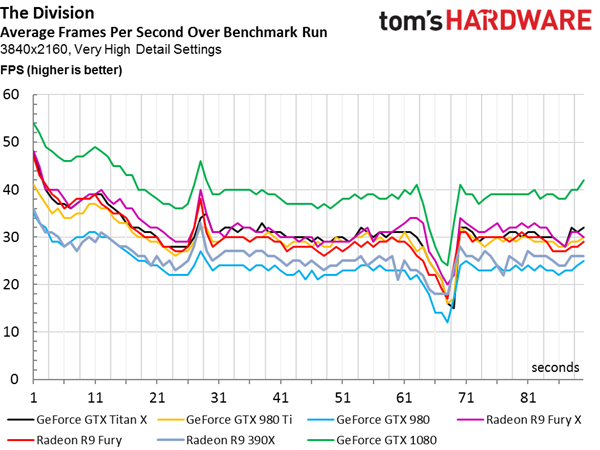
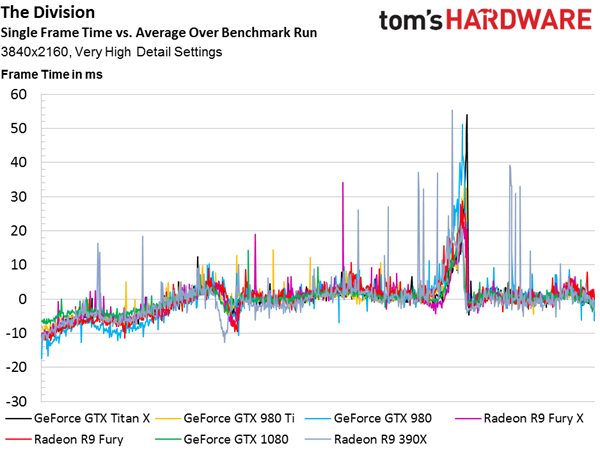
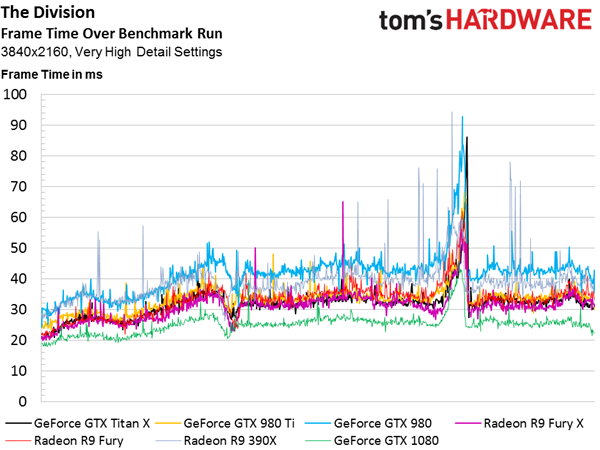
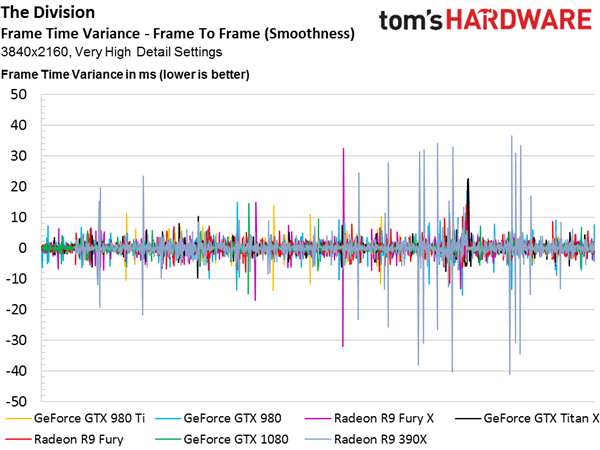
A taxing workload at 3840x2160 takes the whole field down to marginal frame rates, on average. The GeForce GTX 1080 maintains about 40 FPS, dipping as low as 24 at one point. The same trough appears for every card in the frame rate over time chart, suggesting that a GeForce GTX Titan X, 980 Ti or Radeon R9 Fury X could also be considered playable at 4K and maxed-out detail settings.
The Witcher 3
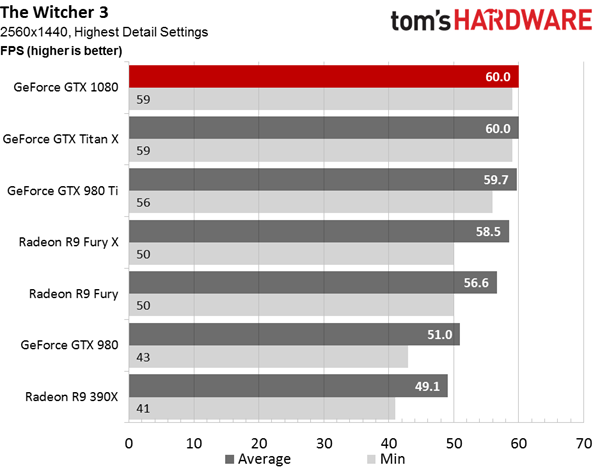
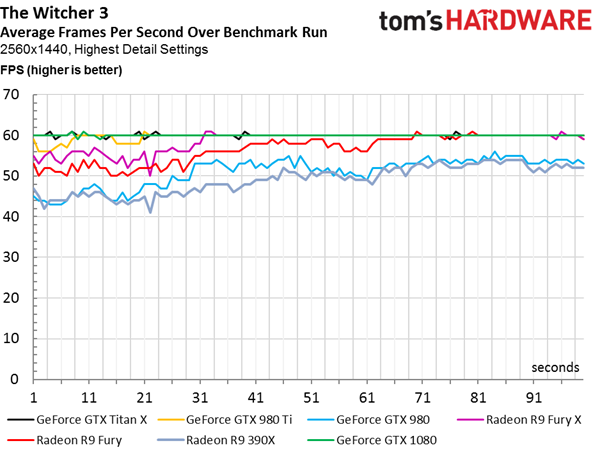
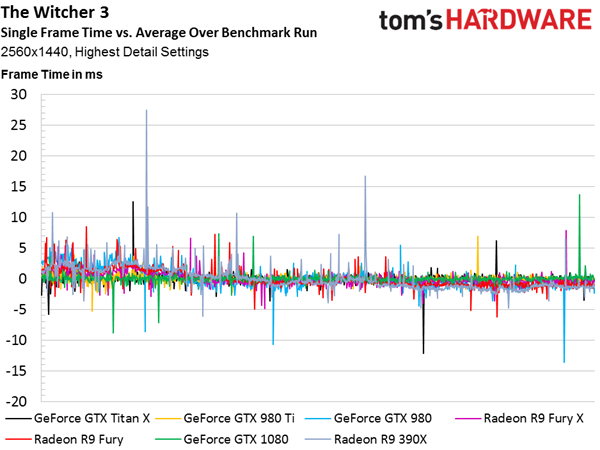
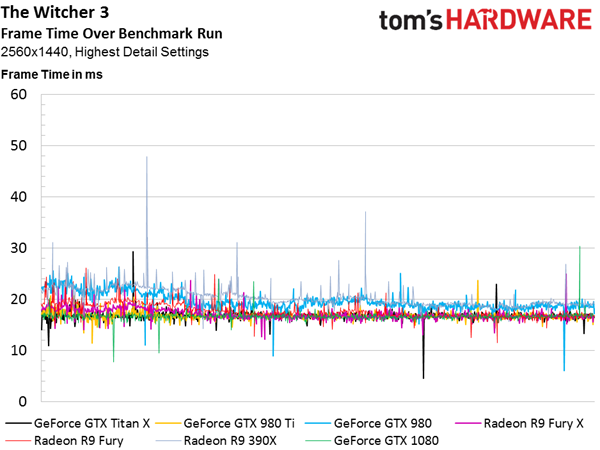

Having put many, many hours into The Witcher 3, we know that this game is subject to some odd performance behavior. We disable vsync, but leave the in-game limiter at 60 FPS to work around some of this. That’s why you see the fastest graphics cards hitting a ceiling at 2560x1440. For the most part, we’re rewarded with minimal frame time variance. The boards unable to sustain 60 FPS are the ones that incur spikes through our benchmark.
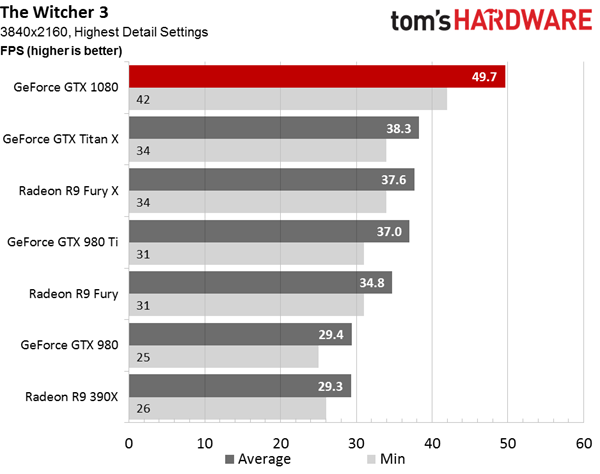
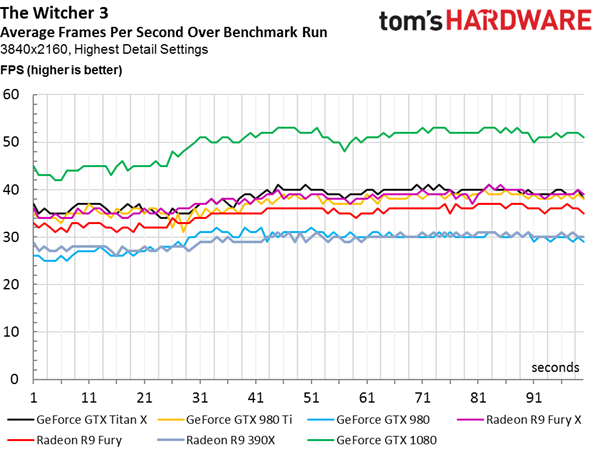
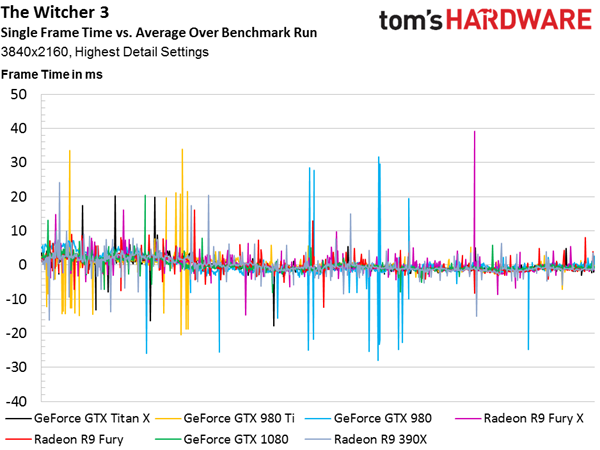
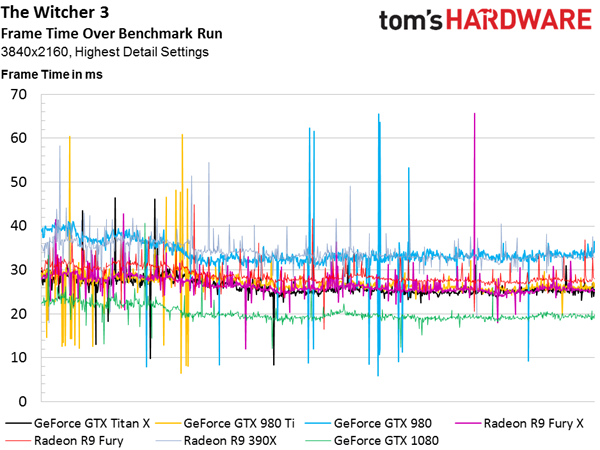
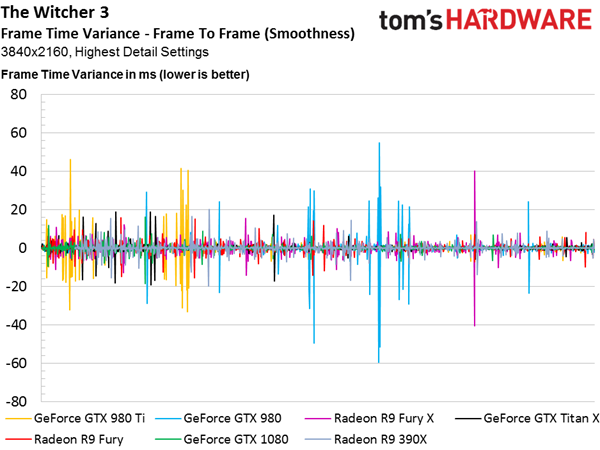
The 4K numbers are more interesting because no one GPU maintains a steady 60 FPS. Even the GeForce GTX 1080, which is 34% faster than a GeForce GTX 980 Ti, dips in just under 50 FPS. The Pascal-based 1080 demonstrates low frame times with almost imperceptible variance throughout the run. Nvidia’s GeForce GTX Titan X and 980 Ti cannot say the same, nor can the vanilla 980.
Aside from a couple of aberrations, AMD’s cards run smoothly. They trade blows with their Nvidia-based competition in average and minimum performance, but simply can’t keep up with GeForce GTX 1080.
Get Tom's Hardware's best news and in-depth reviews, straight to your inbox.
Current page: The Division And The Witcher 3 Results
Prev Page Hitman, CARS And Rise Of The Tomb Raider Results Next Page Professional Application Results-
JeanLuc Chris, were you invited to the Nvidia press event in Texas?Reply
About time we saw some cards based of a new process, it seemed like we were going to be stuck on 28nm for the rest of time.
As normal Nvidia is creaming it up in DX11 but DX12 performance does look ominous IMO, there's not enough gain over the previous generation and makes me think AMD new Polaris cards might dominate when it comes to DX12. -
slimreaper Could you run an Otoy octane bench? This really could change the motion graphics industry!?Reply
-
F-minus Seriously I have to ask, did nvidia instruct every single reviewer to bench the 1080 against stock maxwell cards? Cause i'd like to see real world scenarios with an OCed 980Ti, because nobody runs stock or even buys stock, if you can even buy stock 980Tis.Reply -
cknobman Nice results but honestly they dont blow me away.Reply
In fact, I think Nvidia left the door open for AMD to take control of the high end market later this year.
And fix the friggin power consumption charts, you went with about the worst possible way to show them. -
FormatC Stock 1080 vs. stock 980 Ti :)Reply
Both cards can be oc'ed and if you have a real custom 1080 in your hand, the oc'ed 980 Ti looks in direct comparison to an oc'ed 1080 worse than the stock card in this review to the other stock card. :) -
Gungar @F-minus, i saw the same thing. The gtx 980Ti overclocks way better thn 1080, i am pretty sure OC vs OC, there is nearly no performance difference. (disappointing)Reply -
toddybody Reply@F-minus, i saw the same thing. The gtx 980Ti overclocks way better thn 1080, i am pretty sure OC vs OC, there is nearly no performance difference. (disappointing)
LOL. My 980ti doesnt hit 2.2Ghz on air. We need to wait for more benchmarks...I'd like to see the G1 980ti against a similar 1080. -
F-minus Exactly, but it seems like nvidia instructed every single outlet to bench the Reference 1080 only against stock Maxwell cards, which is honestly <Mod Edit> - pardon. I bet an OCed 980Ti would come super close to the stock 1080, which at that point makes me wonder why even upgrade now, sure you can push the 1080 too, but I'd wait for a price drop or at least the supposed cheaper AIB cards.Reply -
FormatC I have a handpicked Gigabyte GTX 980 Ti Xtreme Gaming Waterforce at 1.65 Ghz in one of my rigs, it's slower.Reply
